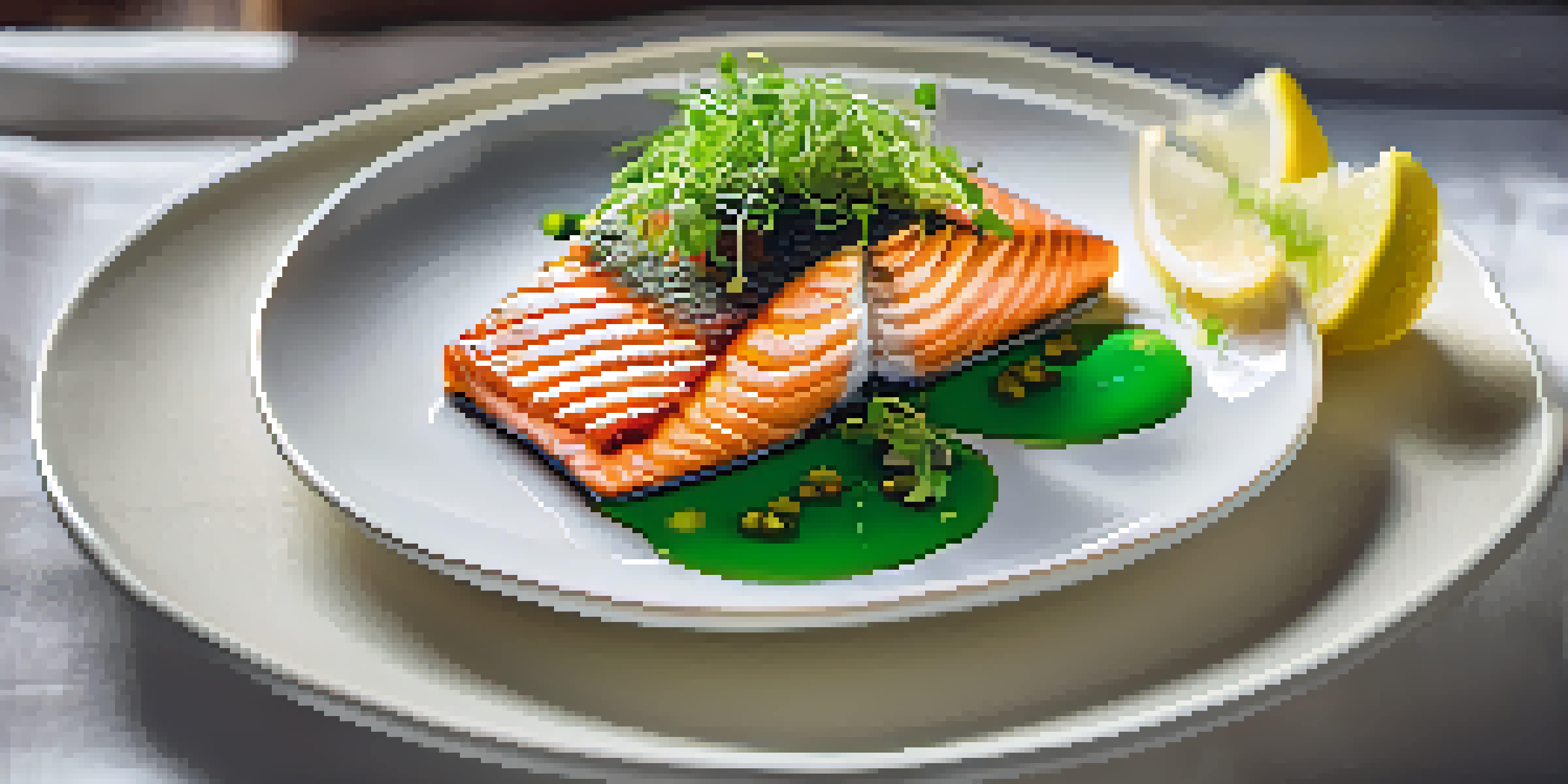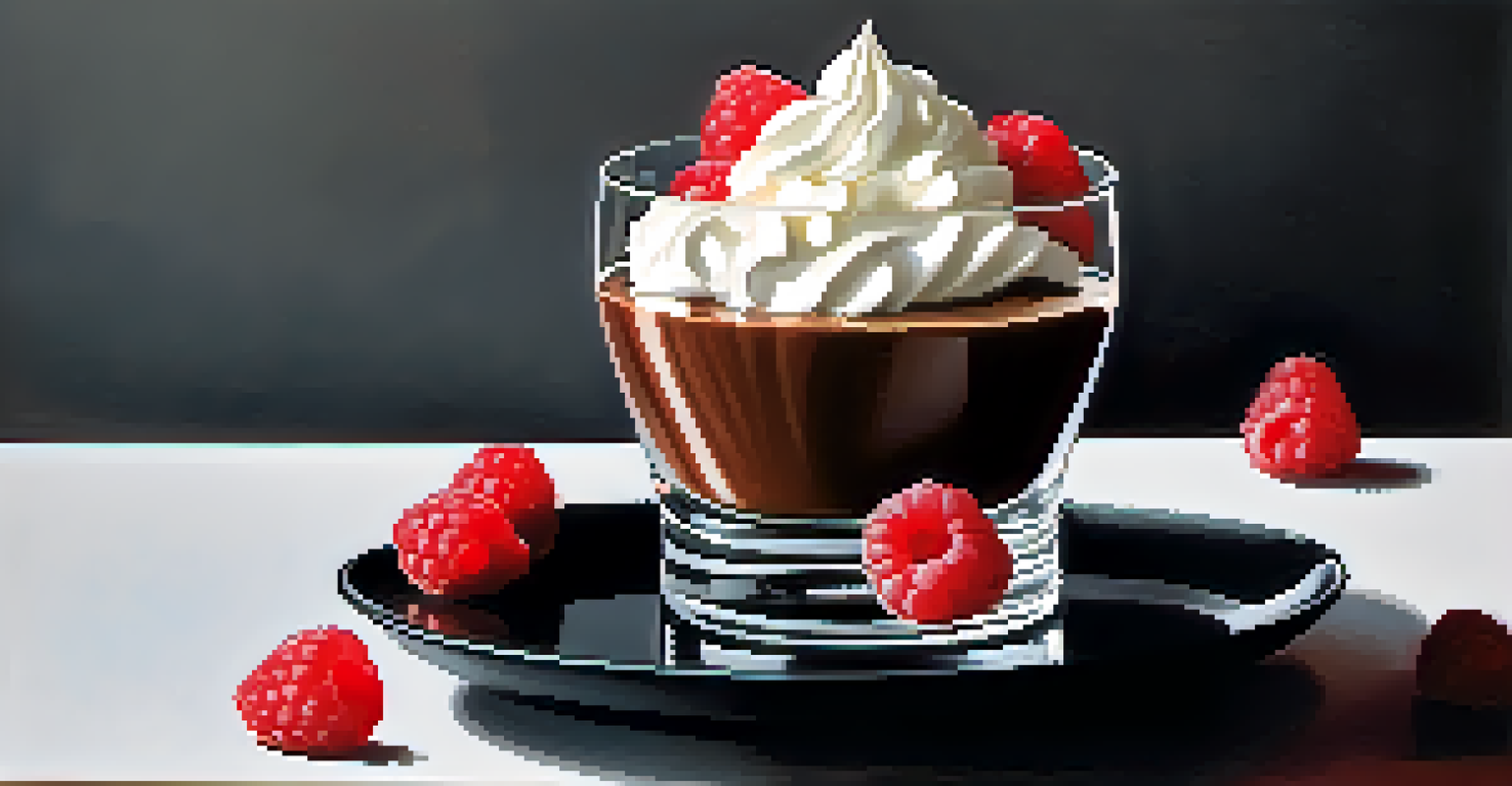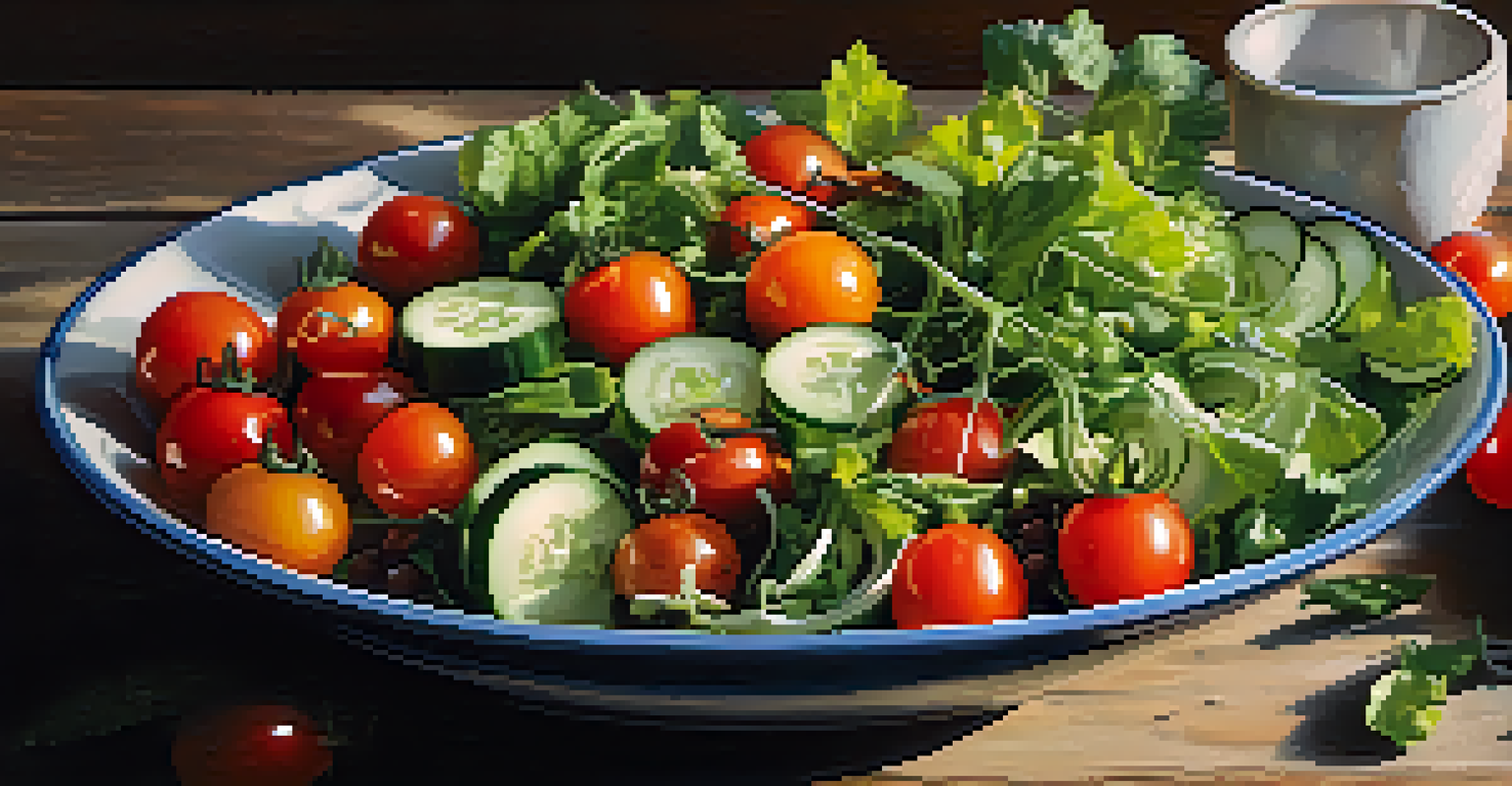The Art of Plating: Elevating Your Culinary Presentations

Understanding the Basics of Plating Techniques
Plating is the art of arranging food on a plate in a visually appealing way. It’s the first impression your dish makes, so understanding the basics is crucial. Think of it as dressing your food for a special occasion; just like a well-chosen outfit can enhance someone's appearance, a well-plated dish can elevate its taste and appeal.
Food is not just what you eat, but how you present it.
Start with a clean, appropriate plate that complements your dish. White plates are a classic choice because they allow the colors of your food to pop. Experiment with different shapes and sizes, as they can change how the dish is perceived, much like how a frame can alter the look of a painting.
Once you’ve chosen your canvas, consider the arrangement. Use techniques like stacking, layering, or even negative space to create a balanced presentation. Remember, less can be more; sometimes, a simple arrangement can be the most striking.
Color: The Key to Visual Appeal
In the world of plating, color is your best friend. A vibrant dish not only catches the eye but can also stimulate the appetite. Think of your plate as a palette where each ingredient contributes to the overall masterpiece; contrasting colors can create excitement, while complementary shades can evoke harmony.

For instance, a bright green herb can add a refreshing pop against a rich, dark sauce. Similarly, the use of colorful vegetables can bring a dish to life, transforming it from mundane to extraordinary. Don’t shy away from colorful garnishes, as they can enhance both the visual and flavor profiles of your meal.
Plating Enhances Food Appeal
A well-plated dish not only looks beautiful but also elevates the overall dining experience.
Ultimately, the goal is to create a feast for the eyes that invites the diner to indulge. A well-thought-out color scheme can set the mood for the dining experience, making it more memorable and enjoyable.
The Importance of Texture in Plating
Texture plays a significant role in the dining experience, and it should be reflected in your plating. A dish that combines various textures—crunchy, creamy, and tender—can create a more engaging experience for the palate. Think of your plate as a landscape where each element contributes to the overall sensory adventure.
The plate is a canvas, and food is the art.
Incorporating different textures not only adds interest visually but also enhances the flavor journey. For example, pairing a smooth puree with crispy elements can create a delightful contrast. This variety can engage your diners and keep them guessing with each bite.
When plating, consider how the elements interact. A delicate drizzle of sauce can add a silky finish, while a sprinkle of nuts or seeds can introduce a satisfying crunch. Balancing these textures can elevate the dish and create a more enjoyable dining experience.
Choosing the Right Plate: Size and Shape Matters
The plate you choose can significantly affect the presentation of your dish. A large plate can make a small portion look lost, while a smaller plate can create a more intimate feel. Think of it like choosing the right frame for a photograph; the right size can highlight the beauty of your work.
Additionally, the shape of the plate can influence how your dish is perceived. Round plates are traditional, but square or rectangular plates can add a modern twist. Experimenting with different shapes can help you find the perfect match for your culinary creations.
Color and Texture Matter
Incorporating vibrant colors and varied textures creates a more engaging and memorable meal.
Remember to leave some negative space on the plate, as it can help highlight the food itself. A cluttered plate may overwhelm the eye, while an elegantly arranged dish with breathing room can make a powerful statement.
Garnishing: The Finishing Touches
Garnishing is the final step in plating that can make or break your presentation. A well-chosen garnish can enhance the dish's flavor, while also adding visual interest. Think of garnishes as the accessories of your culinary ensemble; they should complement, not overpower, the main ingredients.
Herbs, edible flowers, or a drizzle of sauce can add that extra flair to your dish. However, it’s essential to ensure that the garnishes are edible and align with the flavor profile of the dish. A sprinkle of microgreens can add freshness, while a dash of spice can enhance its appeal.
Be mindful of the placement of your garnishes; they should enhance the overall presentation without making the dish appear overcrowded. A simple sprig of parsley can elevate a plate from ordinary to extraordinary.
Creating a Focal Point on the Plate
Every great dish needs a focal point to draw the diner’s eye. This could be the main protein of the dish, an artfully arranged vegetable, or a unique sauce. Think of it as the lead singer in a band; while the other elements are important, the focal point should capture the most attention.
To create a focal point, consider the size, color, and placement of the main element. Position it slightly off-center to create visual interest and allow the surrounding elements to support it. This technique can help guide the diner’s gaze and create a harmonious balance on the plate.
Experimenting is Key to Mastery
Practicing different plating styles allows you to discover your unique approach and improve your skills.
Remember, the focal point should not overwhelm the other components but rather invite the diner to explore the entire dish. A well-plated dish tells a story, and the focal point is often the opening line that captivates.
Practice Makes Perfect: Experimenting with Plating
Like any art form, plating improves with practice. Don’t be afraid to experiment with different styles and techniques to find what resonates with you. Consider each dish you create as a blank canvas, ready for your artistic touch.
Try out various plating styles, from classic arrangements to more avant-garde presentations. You might discover that you have a flair for minimalist designs or a love for intricate, detailed presentations. The key is to keep experimenting and learning from each attempt.

Remember, there’s no right or wrong way to plate; it’s about finding your unique voice and style. Gather feedback from friends and family, and let their reactions guide your journey toward becoming a plating pro.